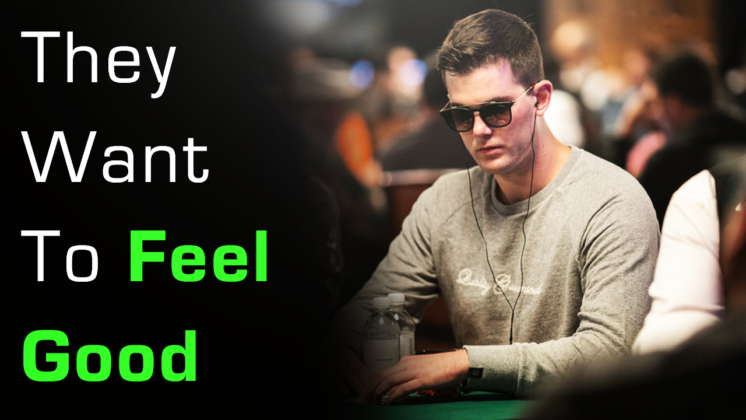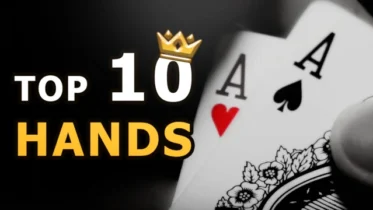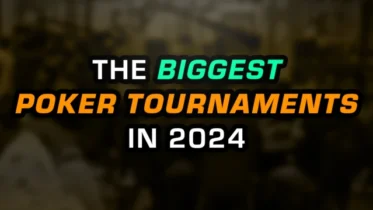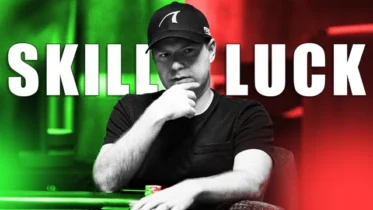“If there is any one secret of success, it lies in the ability to get the other person’s point of view and see things from that person’s angle as well as from your own.” – Henry Ford
Most poker players do not want to make money at the poker table, they want to feel better about themselves. They might think they want to make money, but the way they play doesn’t reflect that. There is no data to support that. Poker, by its very nature, is a game that rewards contrarians. If everybody is viciously value betting, that is because people are calling too much. You should buck the trend, and fold more.
Right now, you can see a contrarian exploitative play in people’s opening ranges. In the United States, people open much wider than ever before. They are doing this for a good reason: People are letting them get away with it. If no one is three-betting them then they are making money with this strategy. You should buck this trend by three-betting more.
Given the fact poker is a game that rewards contrarians, don’t you find it interesting that most people play more or less the same? They open more than they should when it’s folded to them. They flat three-bets when they are reraised. They continue when they hit the flop. They call out of the big blind. They cold call in position with good hands when there is a raise ahead of them. They three-bet when they have premiums.
Since everyone is playing this style, why does anyone expect to stand out from the pack? That makes no sense. It’s because people aren’t playing to stand out from the pack. They simply play to feel better about themselves. This style is a great way to accomplish that. If you cold call preflop with a small pair, it’s a freeroll to look like a genius. If you hit the flop, you’ll win a big pot. If you miss, you fold to a continuation bet and no one notices you. It feels good to play this way.
However, if someone is opening too many hands, the correct way to play this small pair is to turn it into a bluff and three-bet with it. You’ll win a large number of pots when your opponent misses the flop and folds. People won’t do this, however, because you look tremendously stupid when you three-bet and fail, especially if you’ve done it a couple of times to the same guy. Such an occurance is very likely to happen if the same guy keeps opening too much and keeps hitting boards.
People don’t want to feel dumb. That is a human need. They want to be accepted. When someone gets caught bluffing at the poker table, how do people look at that person? They usually look down upon that player. That aggressive gambler is interrupting the normal poker game the “normal” players were enjoying. There is implicit collusion among most players. “Let’s all raise any decent looking hand we like and cold call with good hands. We’ll all look at flops and take it from there, this will give all of us a chance to hit our hands.”
When someone sits down and goes, “no thank you, I don’t want to play that way. If you’re going to keep opening crap hands I will isolate you and get you to fold on the flop when you miss,” then people get angry. They don’t want to play big pots out of position. They wanted to just pay 2.5X to see the flop.
Ever since I’ve begun researching incentives, I’ve become a better business owner and poker player. What is most difficult about understanding incentives is that often people don’t understand what their incentives actually are. Netflix learned this early on. They used to track what movies people said they liked. Then, they began just tracking what movies you actually watched. You might like to think you love foreign films and high-brow documentaries, but Netflix needs to know if you’re actually mashing the play button on the new Adam Sandler comedy.
Most men under the age of 45 play poker in a similar way. I believe this is because most men at some point between the ages of 25 to 35 will realize many of their dreams will not be becoming true. They are still building their careers, searching for an ideal partner, paying off their student loans, and finding their sense of self. They are seeking belonging. In this time of need, they want to feel as if they are cardplayers. They want to be top dog, but they’re afraid to do anything that will see them resoundingly criticized. They already aren’t feeling great about themselves. They don’t want to feel worse.
For years, when I tracked data on live games and online tournaments, I was puzzled as to what I found. It didn’t seem right. It was so banal. In American games especially, most people would only three-bet if they had a real premium. If you went under the hood, you found most of their “light” three-bets were shortstack jams. Early in tournaments, they would never three-bet to take charge. They flatted A-K offsuit and J-J frequently, because they feared facing a four-bet. People never check-raised the flop either. Most guys will only do that with a set, a nut flush draw, or two pair. On turn and river, you saw way less bluffs than you’d expect as well.
Of course, there were exceptions. Wild players stand out in our mind precisely because they are so abnormal. However, the vast majority of players didn’t seem to be playing to win money. Even in spots where a bluff would likely work, people didn’t pull the trigger. Even versus players they knew were opening damn near anything, they wouldn’t increase the size of the pot with their superior hand. They were too worried about facing an unlikely four-bet that would make them feel silly when they three-bet/folded. They were worried about doing a postflop bluff and being caught. They didn’t want to look foolish. They didn’t want to feel bad about themselves.
Interestingly, these statistics do not hold for other age groups and ethnicities. In Asia, there are many cultures where brazen risk taking in gambling is celebrated. It’s seen as a fun way to let off steam among friends. You’ll see way more bluffing in these cultures. In Brazil, aggressive play is celebrated as well. It’s seen as simply a passionate way to play the game. And senior citizens are hilarious when researched. I love them. Some are timid, sure, but many just stop giving a shit after a certain point. They’re at the age they don’t care what anyone thinks of them.
That said, most people end up playing poker more or less the same way. They get addicted to seeing flops cheaply, they do not want to fold preflop. Postflop they learn quickly that high cards are difficult to get to showdown, so they fold them too much. When they hit a pair, they feel as if they connected with the board and they’ve come too far now. They have too much sunk cost in the pot emotionally and financially once they call a bet. They learn early on in their poker career that raising one pair postflop is dangerous, because often the only hands that will play with you are better holdings. So, they call too much with pairs. Folding and being shown a bluff makes them feel bad about themselves, so getting the average player to fold on the turn or river with a pair is extremely difficult.
Calling with one pair is another freeroll for a player to look like a badass. If he catches you bluffing, he gets to show his sick call down. If you have a hand, he can muck, and nobody has to see what he called with. They also tend to raise two pair or better, because generally these hands are good. In short: People fold high cards, call with pairs, and raise with two pair or better. That’s literally how 90% of regular cardplayers will play. This paints how I play practically any pot now.
Let’s take a hypothetical: Perhaps I’m UTG+2 in a $1,000 buy-in WSOP event. Under the gun (UTG) opens and I have 3-3. We’re 100 big blinds deep at the beginning of the tournament. I know this player to be tight, so there’s no sense in three-betting. He’ll simply four-bet all of his premiums, which is his entire range. No, I want to call in this situation because he’s the type to get married to his overpair postflop.
I flat. Middle position flats. Cutoff flats. Button flats. Small blind flats. Big blind flats. Okey doke. The board comes 3-4h-5h. It’s checked to me. I lead half-pot. The player on the button calls. The player in the big blind check-raises to the size of the pot. It’s folded to me. What do you do?
When I play high stakes professionals, I have a huge problem here. This check-raise is designed to look like a straight, and a good pro will know a knowledgeable player could possibly fold overpairs, pairs, and flush draws here…which will be most of our ranges. A good pro might know that and decide to check-raise large with T-9 instead of just call. But versus average players in the WSOP $1,000 event, guys who just play poker semi-seriously, I am generally looking to fold here.
Normal guys don’t want to check-raise a flush draw here because they’ll feel ridiculous if I jam on them, so it’s hard to count that in their range. They almost never check-raise as a complete bluff in this situation either, because they’ll feel stupid if they’re exposed. They’ve gathered through playing for a few years that check-raising T-T here is a great way to go broke, so they don’t do that either. So, that only leaves a few hands in his range. 4-4, 5-5, 6-7, A-2, and 4-5, and the one hand I beat is a bit of a stretch.
Ever since I have begun folding in spots like that versus players who aren’t capable of bluffing, my results have soared. When I teach this concept to my students, their results soar. It’s only when they move up to higher stakes games that we have to recalibrate, and it’s all because we considered our opponent’s incentives as opposed to projecting our own views onto them.



